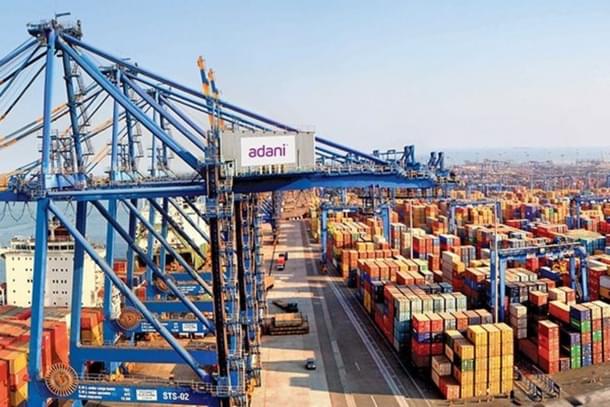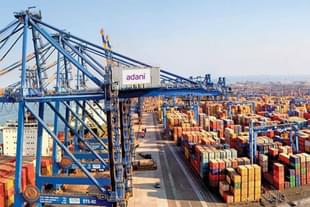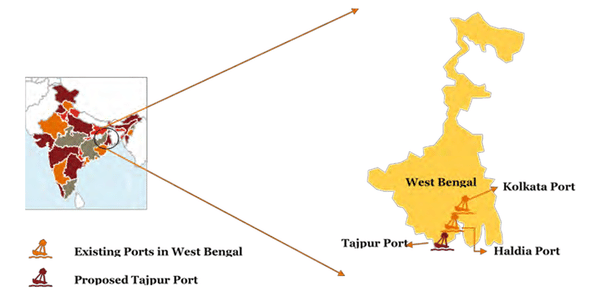Infrastructure
Explained: Significance Of Tajpur Port For West Bengal And Eastern Coast
Amit Mishra
Sep 21, 2022, 01:45 PM | Updated 03:16 PM IST
Save & read from anywhere!
Bookmark stories for easy access on any device or the Swarajya app.


The West Bengal government, on 19 September, approved a proposal for issuing a letter of intent (LoI) to Adani Ports and Special Economic Zone (APSEZ) for development of a greenfield deep-sea port at Tajpur.
India has 12 major ports and 200 non-major ports. Haldia, Kolkata, Dhamra, Paradip and Gopalpur are the ports that serve the Eastern and North Eastern regions of India, comprising the states of West Bengal, Bihar, Chhattisgarh, Jharkhand, Odisha, and Assam.
While Kolkata and Haldia ports are located in West Bengal, Dhamra, Paradip and Gopalpur are situated in Odisha.
It is expected that there will be high demand for ports on Eastern coast, which have been handling around 35-40 per cent of the total sea-borne traffic of India (FY18).
What is the status of ports in West Bengal?
At present, the Syama Prasad Mookerjee Port (SMP) (erstwhile Kolkata Port) is the major seaport in West Bengal. Kolkata Port is the only riverine Port in India, having an existence of 150 years.
The Port has twin dock systems, viz. Kolkata dock System (KDS) on the eastern bank and Haldia Dock Complex (HDC) on the western bank of river Hooghly.
The Port has been handling the major share of trade and commerce of a vast hinterland comprising entire eastern India, including Bihar and eastern Uttar Pradesh and the two land-locked Himalayan Kingdoms of Nepal and Bhutan.
SMP handled the highest traffic volume of 63.983 million tonnes (MT) in 2019-20. While KDS handled traffic of 17.3 MT, HDC recorded the highest ever traffic of 46.680 MT in 2019-20.
During 2020-21, the SMP port handled 61.337 MT traffic, a fall of a nominal 4.14 per cent despite the outbreak of Pandemic Covid-19 and the severe Amphan cyclone.
Why is West Bengal bullish on port-led development?
The state of West Bengal is strategically placed as its hinterland comprises mineral-rich states of Chhattisgarh, Jharkhand and Odisha, and presents a strong cargo potential for bulk commodities.
Combined with strategic location, the state has a 950 km long coastline for port operations, and navigable and potentially navigable waterways including Bay of Bengal and NW-1 (national waterway). Thus, growth in cargo handling at ports in West Bengal is expected.
The economic activity in the region is expected to boost further with the commissioning of high-speed dedicated freight corridors like Eastern Dedicated Freight Corridor (EDFC), and the proposed East Coast DFC.
Eastern India, especially West Bengal, is poised to become a hub for regional cargo distribution.
Why the state decided for a greenfield project
There is a strong opportunity for enhanced demand for cargo handling in West Bengal. According to a conservative estimate, the expected cargo at eastern ports would reach around ~ 340 MT by 2030 and around ~ 580 MT by 2040.
However, the existing ports on the eastern side face natural restrictions like limited draft, higher maintenance dredging, tidal dependency for vessel transit etc., resulting in capacity constraints. Further, scope of expansion of existing ports in the state is limited.
The expected increase in demand for cargo handling in the state, combined with capacity limitations faced by existing ports in the state, has created a need to develop a new deep-sea port in the region.
Why has Tajpur been selected as the site for new Port?
The deep-draft Port at Tajpur is proposed to be located on the sea near the tourist destinations of Digha and Mandarmani beach, in Purba Medinipur district of West Bengal.
The region is near the mineral belts in the states of West Bengal, Odisha, Chhattisgarh and Jharkhand.
Further, these states house large power plants, steel manufacturing units, and other manufacturing facilities, which drive the demand for bulk commodities such as coal (coking and non-coking), iron ore, limestone and other containerised products in the region.
The Tajpur site thus addresses the demand potential of hinterland and prevailing infrastructure challenges of existing ports in the state.

What are the main features of the new Port?
The Port is proposed to be located near Tajpur, 5 km from NH-116B and around 170 km from the state capital, Kolkata.
It is all-weather deep seaport with a draft of 12.1 m with 18 km channel and with tidal support of 3.9 m, leading to a net 16m draft facility enabling large cape size vessels of one lakh deadweight tonnage.
The investment in the project involves Rs 15,000 crore while related port-led infrastructure development would involve another Rs 10,000 crore.
It is expected to create 25,000 direct jobs and more than one lakh indirect jobs.
Also Read: Explained: Karnataka Big Bet On Port-Led Development Strategy As It Invites Global Tender For Two New Ports At Keni And Pavinakurve





